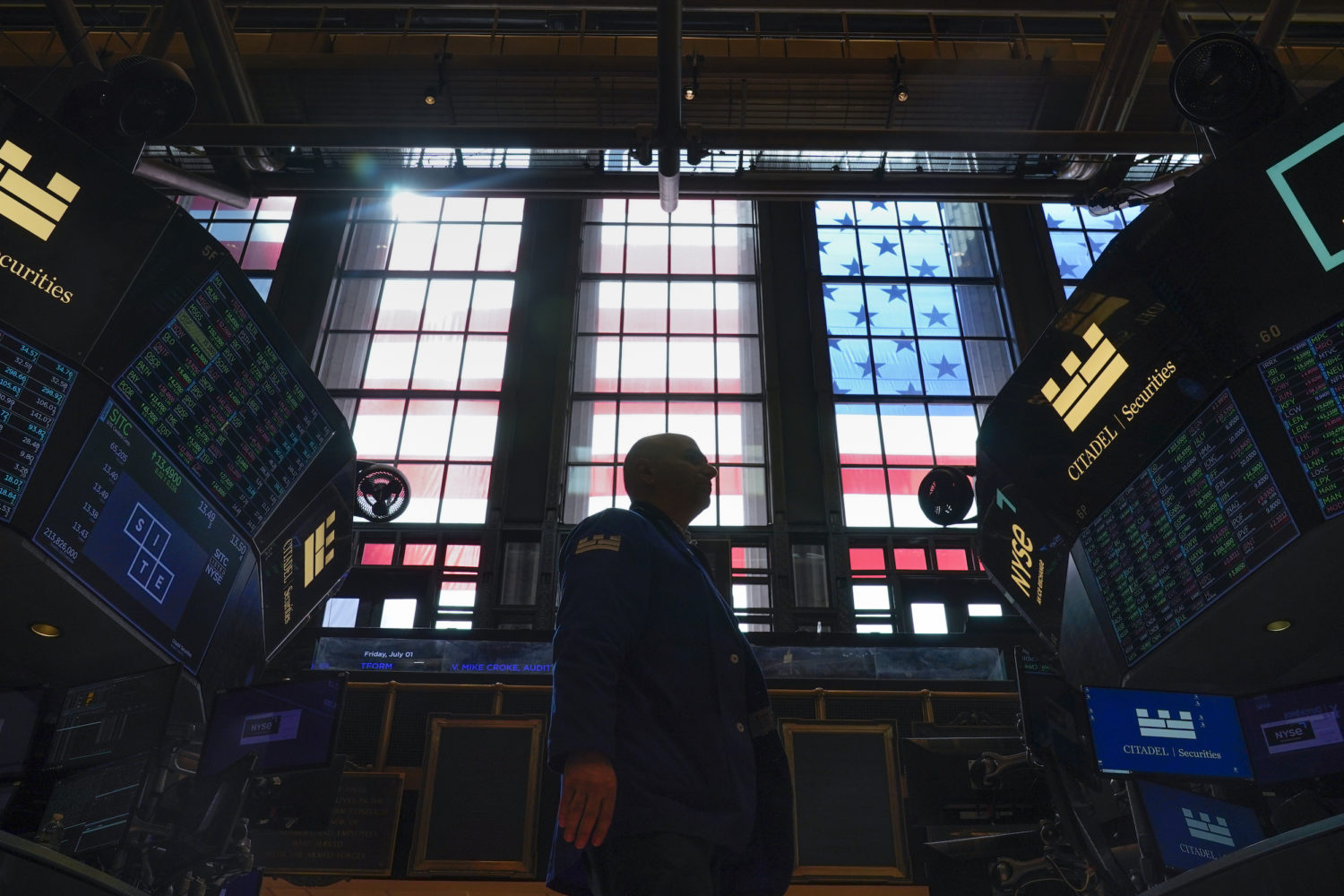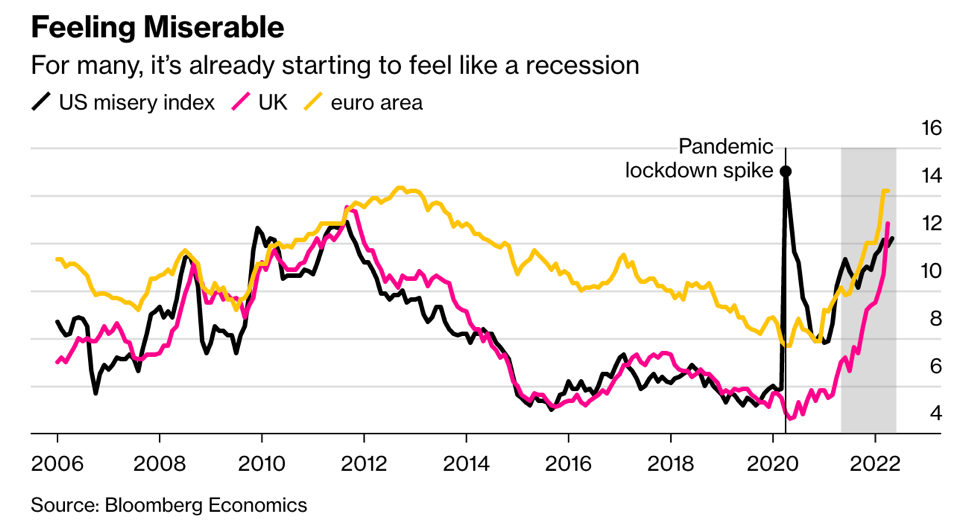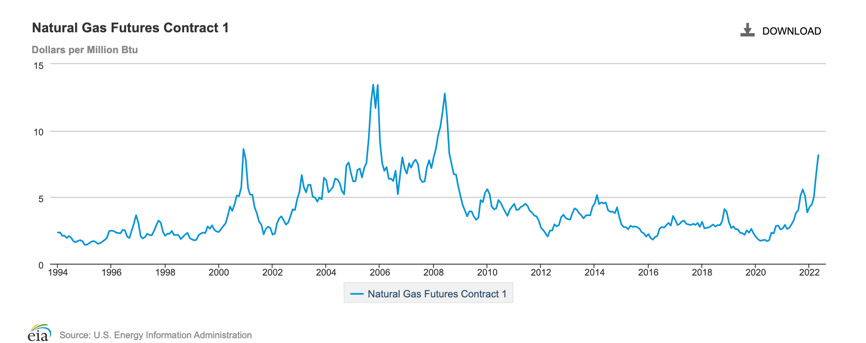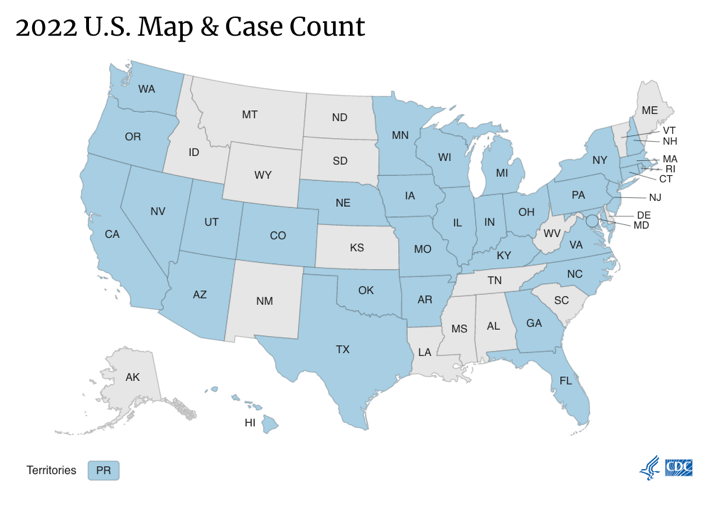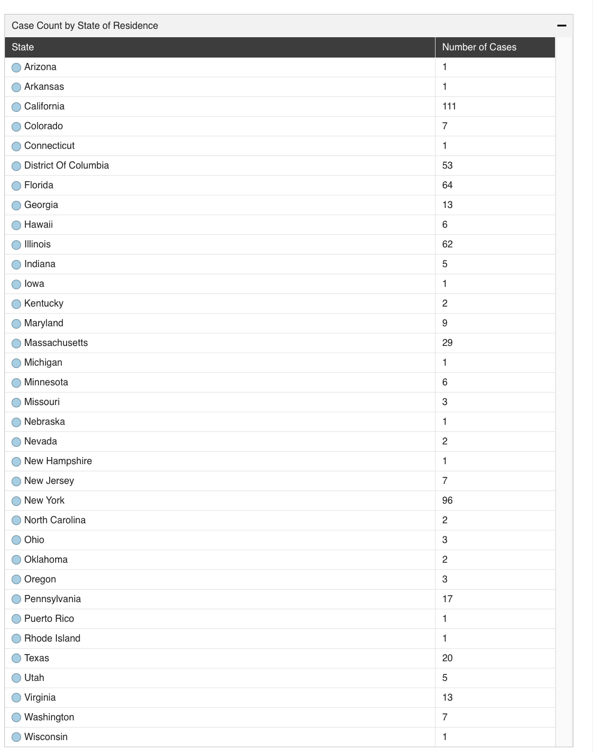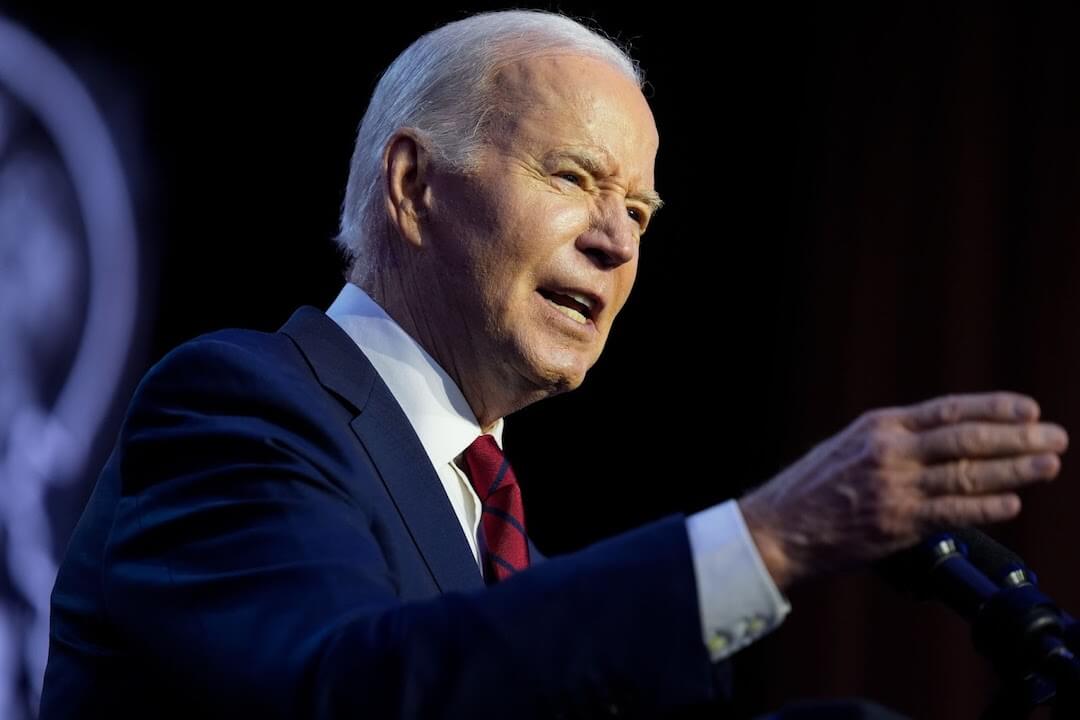 Covering COVID-19 is a daily Poynter briefing of story ideas about the coronavirus and other timely topics for journalists, written by senior faculty Al Tompkins. Sign up here to have it delivered to your inbox every weekday morning.
Covering COVID-19 is a daily Poynter briefing of story ideas about the coronavirus and other timely topics for journalists, written by senior faculty Al Tompkins. Sign up here to have it delivered to your inbox every weekday morning.
We sometimes do not know we are in a recession until we have been in it for a while. And there is no official government declaration of a recession. It is a numbers game, and the numbers now say what you want them to say.
If you look just at the Federal Reserve Bank of Atlanta’s GDPNow data, which tries to tell us how the economy is doing in near real time, this is what you would find, with new data coming out today:
Latest estimate: -2.1 percent — July 1, 2022
The GDPNow model estimate for real GDP growth (seasonally adjusted annual rate) in the second quarter of 2022 is -2.1 percent on July 1, down from -1.0 percent on June 30.
That estimate would mean the U.S. economy has experienced two successive quarters of a negative gross domestic product, which is the (usual) definition of a recession. Check back on the data today to see if it holds, and then expect a whole new round of “are we in a recession” talk to begin anew.
But when the new unemployment figures come out on Friday, we will see once again that the jobs report is pretty healthy. And despite high oil prices and supply chain problems, the industrial and service industry sectors say they are still kicking.
The Bloomberg Misery Index gives us a picture of how people are feeling, and the charts say people “feel” like they are experiencing a recession, despite what some economists see in the data.
As I have explained before, the quasi-official declaration of a recession comes from the National Bureau of Economic Research Business Cycle Dating Committee, which includes top university economists. But Bloomberg points out that in a pandemic economy, the old reliable definitions of a recession may not matter as much as what people feel:
Goldman Sachs Group Inc. economists put the risk of such a slump in the US in the next year at 30%. A Bloomberg Economics model sees a 38% chance in the same period, with the risks building beyond that time frame. But for many it already feels like it’s here. More than one-third of Americans believe the economy is now in a recession, according to a poll last month by CivicScience.
The worries among small business owners, consumers and others are illustrated by so-called Misery Indexes, which blend unemployment and inflation rates. The gauge for the US is already 12.2%, similar to levels witnessed at the start of the pandemic and in the wake of the 2008 financial crisis, according to Bloomberg Economics.
“People are getting poorer,” said Ludovic Subran, chief economist at Allianz SE. “So, this is not a recession, but it really feels and tastes like a recession.”
Interestingly, oil futures fell Wednesday on recession rumors, under the notion that there will be less demand for fuel if we are in or heading for a recession.
Pay attention to soaring natural gas prices
An important move with global implications is happening in the natural gas world.
Today, the Energy Information Administration releases the newest “storage data,” an estimate of gas supplies, in a week when much of the country is boiling hot and using copious amounts of energy to try to cool homes and businesses. The Natural Gas Intel website, which monitors the industry, warns:
The next 10 days remain on track to deliver strong demand temperature-wise “as the southern two-thirds of the U.S. experiences highs of upper 80s to 100s, hottest over the Southwest deserts, Texas and the Southern Plains,” NatGasWeather said.
It is always useful to look at the wider picture of price trends to see where we are compared to history, not just the last couple of years.
For some European countries, natural gas prices have not just doubled or tripled, they are up 700% because of the Russian invasion of Ukraine causing supply interruptions.
Globally, Norway’s government just stepped in to end a strike that the government said could have “caused widespread disruption to several gas fields and pipelines.” Today, the German government will vote to force some industries to cut back on natural gas use this summer to build up winter supplies. Other poorer countries are planning blackout periods to save fuel.
Europe is facing its biggest energy crisis in decades, with Russia curbing shipments as tensions mount over the war in Ukraine and related sanctions. The Nord Stream pipeline to Germany, the main conduit to the continent, is set to close for annual maintenance next week, and there are concerns that it won’t return to full service after the works.
Gas prices are so high in Europe that coal is making a bit of a comeback. Marketplace reports:
Germany, Austria and now the Netherlands are firing back up their coal power plants to limit the use of Russian natural gas, an energy source that is increasingly difficult to rely on. While coal may meet short-term supply needs, it may also impede the fight against climate change.
The dollar is nearly equal to the euro — so what?
As Europe teeters toward a recession, the euro and the dollar are nearly at parity, or equal. That marks a 20-year low for the euro and a 10% decline in the euro in one year. The travel website ThePointsGuy says while this could be a reason for Americans to travel to Europe, the reality is that airfare, hotel and other costs are higher than usual and there is a crush of tourism demand right now, so don’t expect any bargains.
El País has some details on European efforts to get a handle on inflation, but the problems are deeper even than those the U.S. faces. And dollar-euro parity will be difficult for U.S. exports to Europe since American products would become instantly more expensive even without the additional inflationary pressures.
Monkeypox cases grow and grow
New York City’s monkeypox cases doubled in the last week. This is the newest U.S. case count:
Problems with electric police cars
This story is out of England, and I know of no such problems in the U.S., but it caught my eye and I will keep it in mind as electric cars replace gas engines. The story, in brief, says that cops out on patrol run out of electricity for their patrol cars and have to hunt for a power station or switch cars.
Neighborhoods with more dogs have less crime
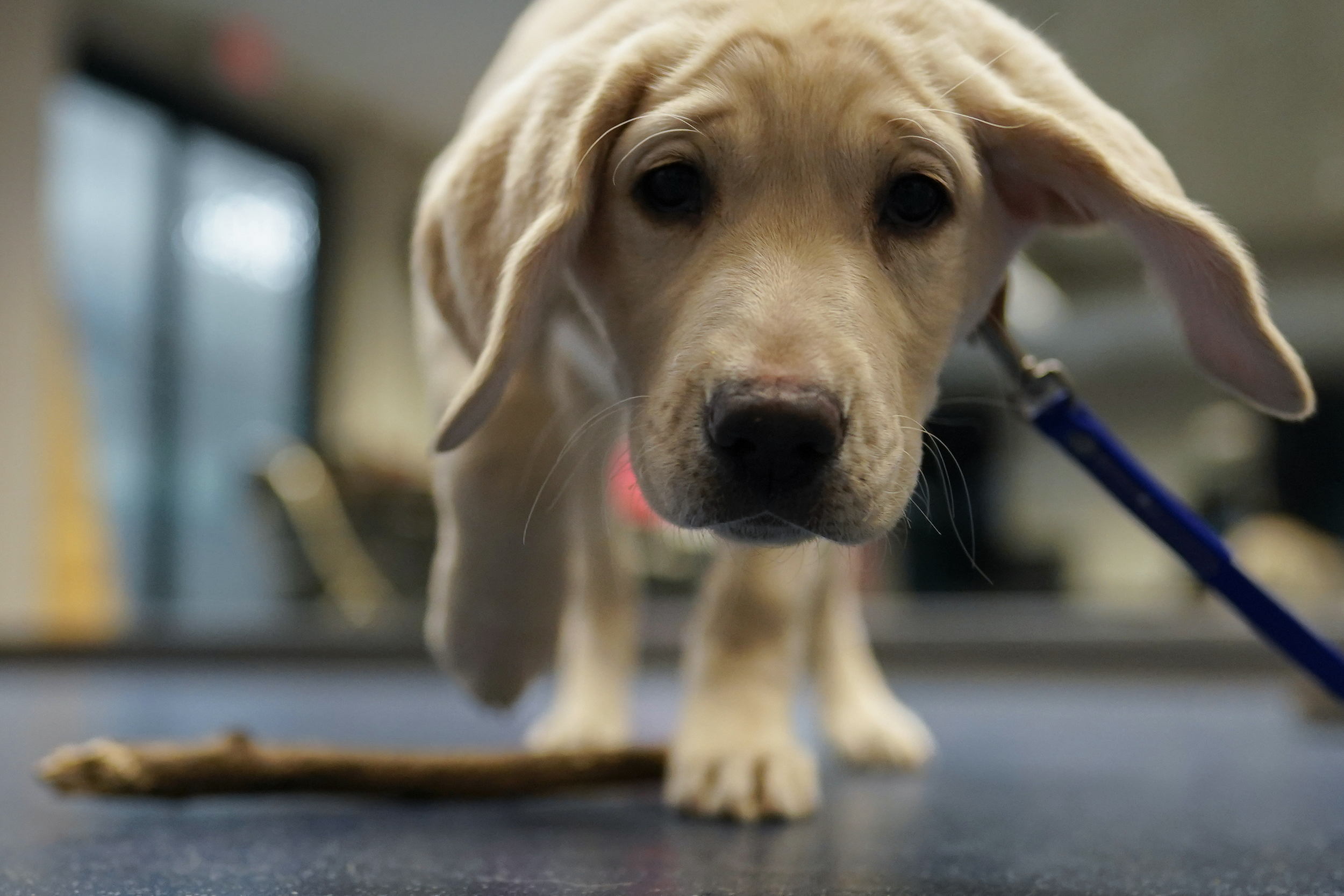
Moira, a 9-week-old Labrador puppy, sniffs the camera after dropping her stick during a Guiding Eyes for the Blind foundation class at Talbot Community Center, in Easton, Md., Tuesday, Feb. 15, 2022. (AP Photo/Carolyn Kaster)
This Ohio State University study is an example of how correlation does not necessarily mean causation.
The study finds that Columbus neighborhoods “with more dogs had lower rates of homicide, robbery and, to a lesser extent, aggravated assaults compared to areas with fewer dogs, at least when residents also had high levels of trust in each other.”
But before you jump to conclusions that the dogs were the cause for the lower crime rate, read on.
It turns out that the major contributor to the lower crime rate is that in neighborhoods where there are more dogs, there are also more people out walking their dogs. Plus, the study says, neighborhoods with lots of dog-walkers tend to be areas where neighbors trust each other more. The researchers found:
“Trust doesn’t help neighborhoods as much if you don’t have people out there on the streets noticing what is going on. That’s what dog walking does,” lead researcher Nicolo Pinchak, said. And that’s why dogs have a crime-fighting advantage over cats and other pets that don’t need walking.
“When people are out walking their dogs, they have conversations, they pet each other’s dogs. Sometimes they know the dog’s name and not even the owners. They learn what’s going on and can spot potential problems.”
The study found that more dogs in a neighborhood was also related to fewer property crimes, like burglaries, irrespective of how much residents trust each other, Pinchak said.
That’s because barking and visible dogs can keep criminals away from buildings where the dogs are found – and neighborhood trust and surveillance is not needed as a factor, as it is in street crimes.
The protective effect of dogs and trust was found even when a wide range of other factors related to crime was taken into account, including the proportion of young males in the neighborhood, residential instability and socioeconomic status.
We’ll be back tomorrow with a new edition of Covering COVID-19. Are you subscribed? Sign up here to get it delivered right to your inbox.

